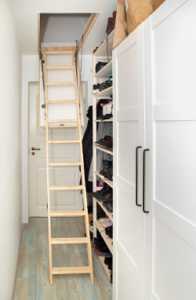Roof hatches allow individuals to safely and easily access the roof of a building to perform maintenance. They are available in many different styles, materials and sizes.
The material of the roof hatch is essential because it will determine its durability, maintenance requirements and aesthetics. Typical hatch materials include galvanised steel, aluminium or stainless steel. For more information about the roof access hatches cost, click here.
Material
 The construction material for roof access hatches should be corrosion-resistant. Ideally, the cover should also be insulated to reduce energy loss. Alternatively, the hatch should be equipped with a railing to prevent accidental falls from heights.
The construction material for roof access hatches should be corrosion-resistant. Ideally, the cover should also be insulated to reduce energy loss. Alternatively, the hatch should be equipped with a railing to prevent accidental falls from heights.
In non-residential buildings, roof access hatches allow people to perform maintenance on rooftop installations and to access rooftop terraces. They also prevent the need to climb caged ladders, which are dangerous and inconvenient. In addition, the hatches provide easy, safe, and direct access to the roof.
The frequency and reason individuals access a roof will determine the type of hatch required. For example, if maintenance personnel carry extensive tools and equipment onto the roof for regular service, a larger hatch with stair access may be necessary. A type E or ship stair roof hatch is wider than ladder access and features a positive latching system to limit access. It can be fabricated in custom sizes and is available in single- or double-leaf units.
Design
Roof hatches are designed for specific purposes and settings. Some are steel and made to withstand snow, wind, rain, and foot traffic. They have rust-resistant coatings and weather gaskets to protect the interior from the elements. They also have sturdy handles and are easy to open and close. They are an excellent alternative to caged ladders, often allowing unauthorised individuals to access the roof. For more information about the roof access hatches cost, click here.
They are also available in a variety of sizes. Some are designed for interior ladders or ship stair access, while others have a wide opening and can accommodate large equipment. These doors have a positive latching system to prevent accidental closure and can be locked inside and outside the building.
Other safety features include ladder safety posts installed on the top two ladder rungs to provide stability and support for workers. These products can help workers avoid the risk of falls, which may result in significant fines under IBC and OSHA regulations.
Installation
Roof access hatches make it easier and safer for maintenance workers to get on a building roof. Unlike exterior wall ladders, which anyone can climb, roof hatches have locking mechanisms that require a key to open. It provides greater security and prevents break-ins or damage to roof equipment.
Hatches can be installed in different ways, depending on the type of building and its use. For example, a hospital might require a hatch made from corrosion-resistant materials. Other factors may also influence the choice, such as aesthetics or location.
AHSS technicians can assess a building and install a roof access hatch that meets Australian height safety standards and requirements. They can also add extra features to help users safely and efficiently use the hatch. These include mechanical elements like compression springs and automatic hold-open arms. These can minimise the risk of the cover suddenly shutting during operation or windy conditions. They can also increase the capacity of a hatch by adding support bars and guardrails.
Maintenance
Roof hatches may seem innocuous, but they are vital to a building’s infrastructure, allowing safe and convenient access to rooftop equipment. It enables maintenance tasks to be carried out regularly and in the event of an emergency.
Hatches are often installed with railing systems to help prevent falls. Safety guidelines require any rooftop opening, including hatches and ladderways, to have guardrails. However, netting and personal fall arrest systems are not suitable forms of protection for a rooftop. Hatches with corrosion-resistant materials such as aluminium and glazed roof hatches should have fire-rated glass. The hatch must also be insulated to prevent frost and condensation from forming inside the structure. For more information about the roof access hatches cost, click here.